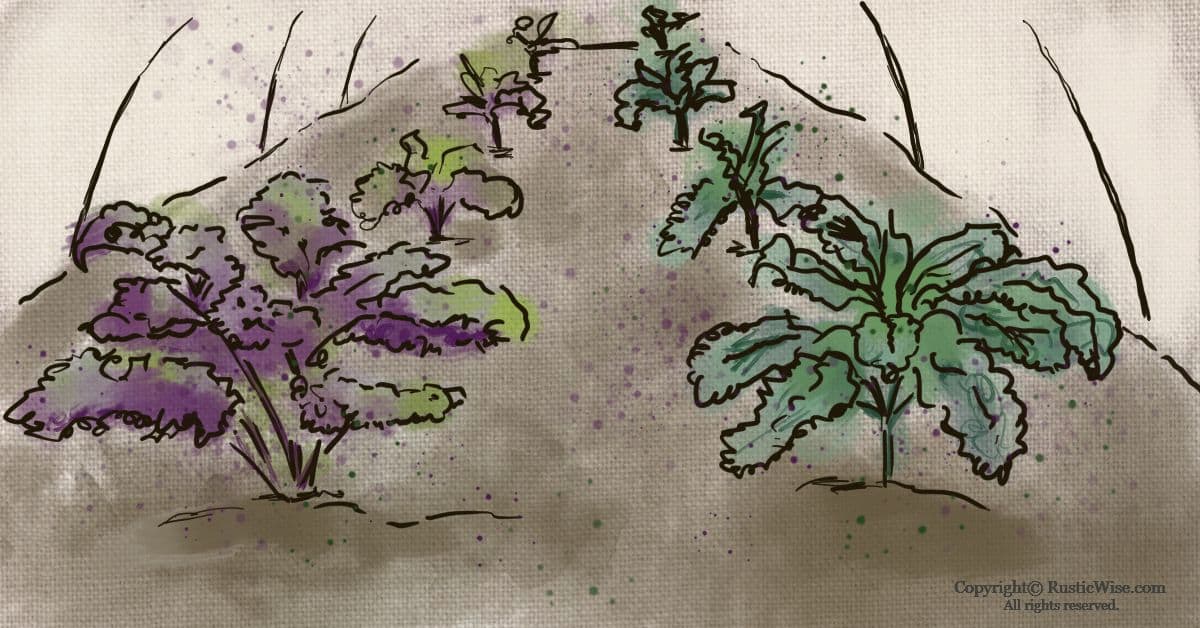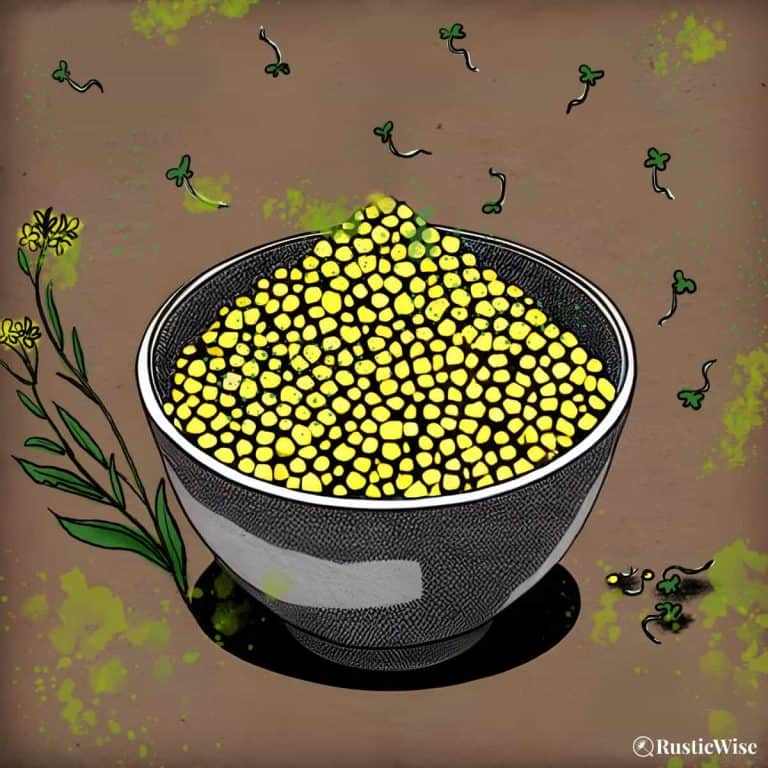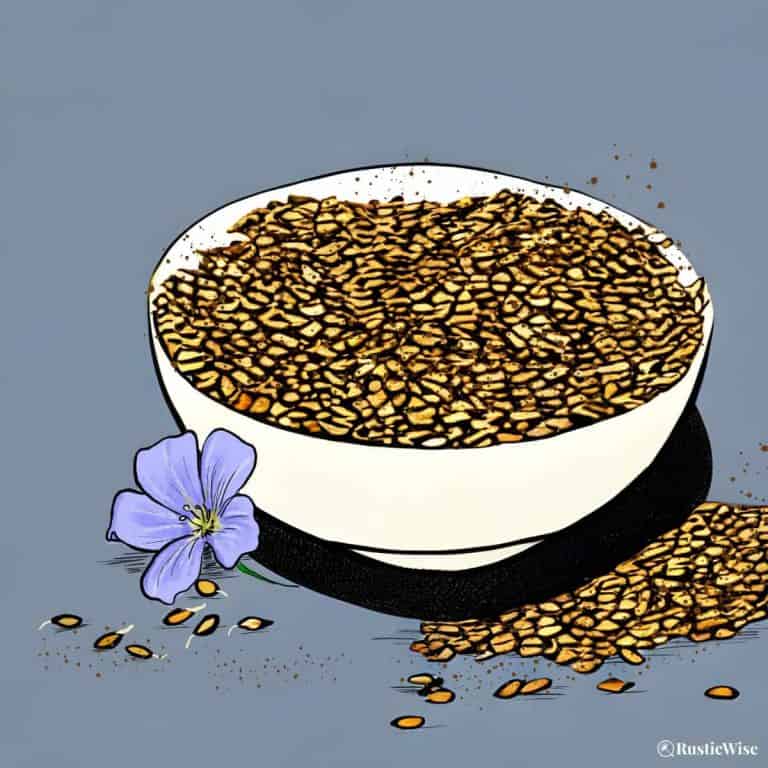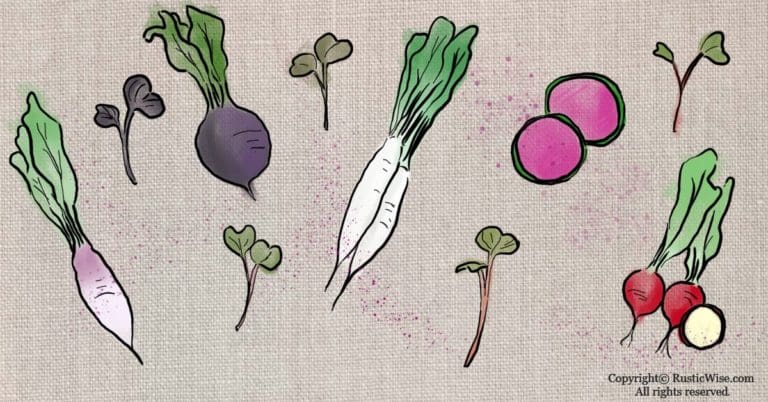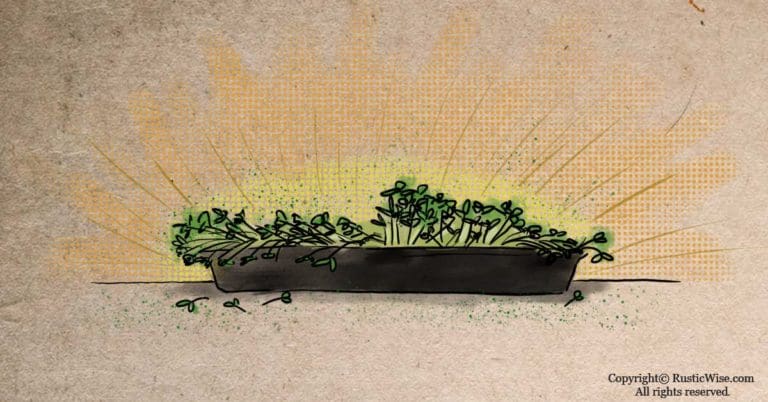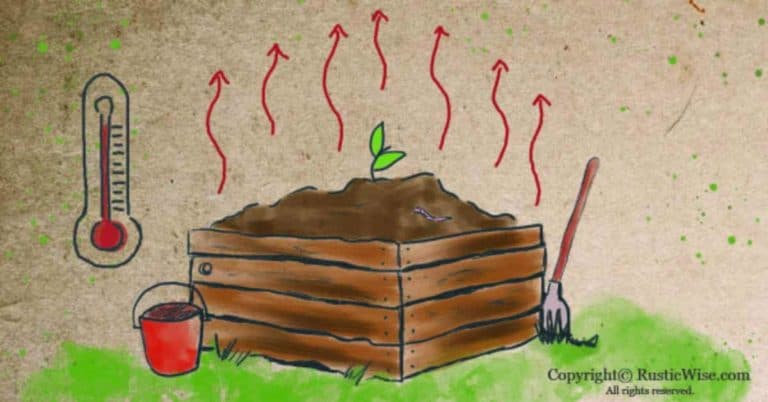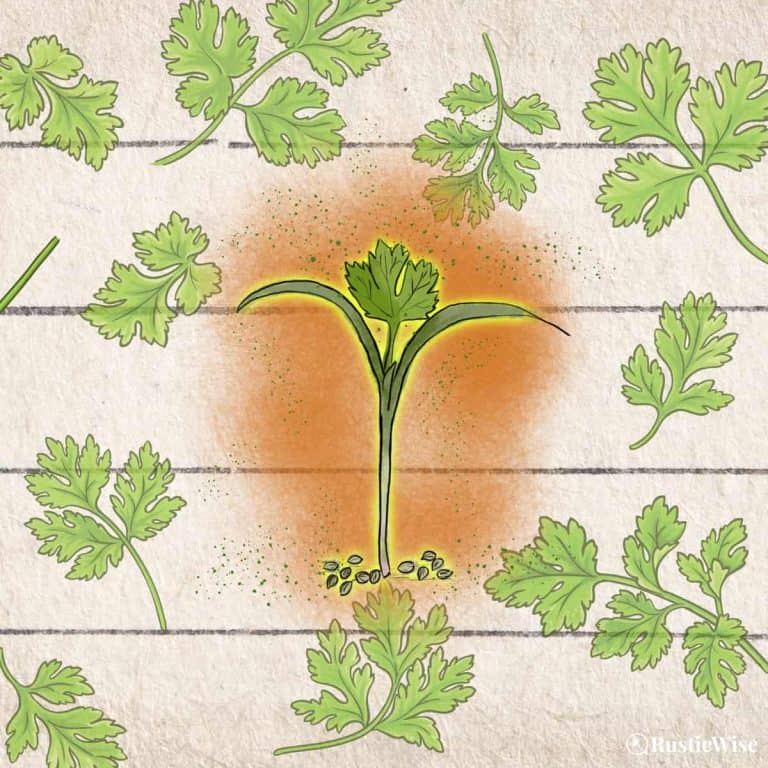Growing Kale in Winter: Making the Most of this Cold-Hardy Vegetable
While some prefer to plant their kale in early spring to harvest before the peak summer months, others prefer to plant in late summer or early fall for winter harvests. Winter gardeners know that a touch of frost turns these leafy greens sweet.
When other vegetables wilt at the first signs of frost, kale is just finding its stride. Kale is a cold-hardy biennial vegetable that regrows after harvesting, can continue growing throughout winter in milder climates, and continue to produce more tasty leaves come springtime. Growing kale in winter is a great way to keep a source of leafy greens all year.
Kale (Brassica oleracea) belongs to the same family which includes cruciferous vegetables such as cauliflower, broccoli, cabbage, and mustard plants. While there are many different cultivars of kale, some used ornamentally, it most closely resembles its cousin, the cabbage.
Growing kale in winter takes a bit of planning and planting (but you already knew that). Like the old fable of the grasshopper and the ant, doing a bit of extra work lets you reap the benefits of fresh kale to brighten the cold winter months. Your grasshopper friends might be envious of your harvest (sorry, grasshoppers).
How cold is too cold for kale?
People are often wondering what the coldest temperature is that kale can tolerate.
It’s important to note that a plant’s cold tolerance is dependent on its preconditioning. For example, if a plant has been basking in balmy weather for weeks, and the temperatures suddenly drop below 22 degrees Fahrenheit (-5 degrees Celsius), even the most hardiest vegetable may not survive.
However, if the same plant had experienced a bit of cold to toughen it up beforehand, it may do just fine.
When temperatures drop, kale and other cold-tolerant plants don’t die, they just slow down. There’s an informative article from Oregon State University that says as a general guideline, growth rate doubles every increase of 18 degrees Fahrenheit (7.7 degrees Celsius). But this only applies within an air temperature range of 40-98 degrees Fahrenheit (4.4-36.7 degrees Celsius).
Luckily, kale belongs to the hardiest, most cold-tolerant group of vegetables which can withstand air temperatures below 28 degrees Fahrenheit (-2.2 degrees Celsius). Kale continues to do fine until soil temperatures hover around 20 degrees Fahrenheit (-6.7 degrees Celsius). However if you live in an area with extended periods of cold below 5 degrees Fahrenheit (-15 degrees Celsius), sorry, you’re out of luck.
Other vegetables that belong to this exclusive cold-resistant club include: beets, Brussels sprouts, cabbage, carrots, collards, kohlrabi, parsley, spinach, garlic, leeks, radish, mustard, and turnip.
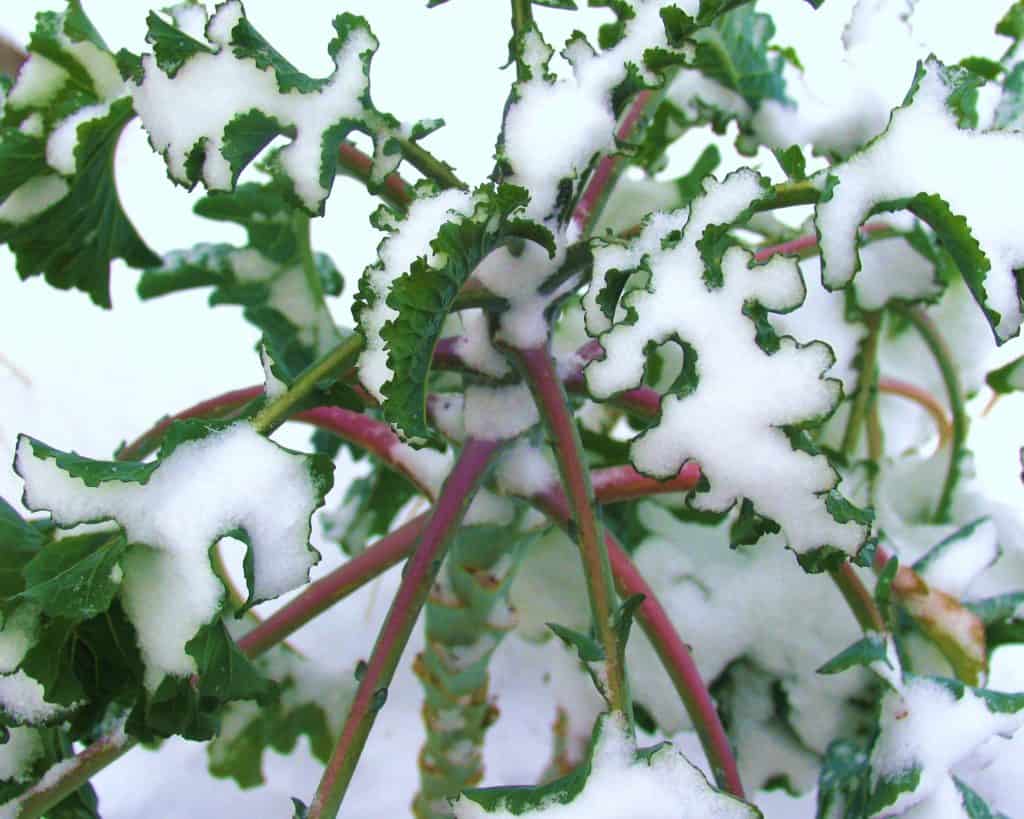
Credit: naturalflow / Flickr, kale still surviving
The best varieties of kale for winter gardening
Not all types of kale are created equal when it comes to being cold-hardy. Some cultivars are designed to withstand wintry conditions. Generally, curly-leafed kale does better in winter, with quick-growing, fuller bunches.
Here’s a fun fact: vegetables that are red or purple contain a pigment called anthocyanin which makes them more resistant to rotting in winter. This explains why so many red-colored kale varieties made this list!
Here are a few varieties that are cold-resistant (because there’s nothing more soul-crushing than having a crop failure in the dead of winter).
- Winterbor Kale: Aptly named, this hybrid kale variety is extremely frost-resistant. Harvest its ruffled blue-green baby leaves for salads. Once winter hits, the larger leaves are great for adding to soups, stews, and stir-fry.
- Dwarf Blue Curled Kale: This is a variety that goes by many names including Scotch kale, Vates kale, or Blue Scotch Curled. This variety is great for making kale chips and is the most common variety found in grocery stores. Low-growing, this variety also does well in containers, and turns especially sweet after a bit of frost.
- True Siberian: With its large, frilly, blue-green leaves, this variety is quick to grow, and can often be harvested all winter in milder climates.
- Redbor: A hybrid plant with curly, maroon-colored leaves that is at its peak in fall and is cold-hardy.
- Red Russian: Very cold-resistant, this variety can keep all winter in some climates. With flat green leaves and purple-y stems and veins, the color and taste improves with some frost.
- Scarlet Kale: This is a variety that truly blossoms when temperatures drop, with its red leaves deepening, and its flavor turning sweeter. While some may choose to keep this for ornamental purposes, it’s also completely edible.
- Dwarf Green Curled: A cold-hardy variety that also does well in containers due to its compact size.
Check out a list of over 50 kale varieties here.
Tips on planting, harvesting and taking caring of kale in winter
The best time to plant kale for a winter harvest is between late July or August (once the scorching heat has passed), to September (in warmer climates).
Seeds can be grown indoors or outside. If planting outdoors, it’s especially important to pick a spot that receives enough sunlight, between 6-8 hours a day. Kale loves loamy, well-drained soil with plenty of organic matter. Sow around three or four seeds ¼ inches (5 millimeters) deep in each spot you want a plant to sprout.
Seeds germinate in 7-10 days. Thin your kale seedlings by keeping the strongest ones until they are 18-24 inches ( 45-60 centimeters) apart in rows.
Depending on the variety, kale plants are ready to harvest in 55 to 75 days if grown from seed (less if you’re working with a transplant). Harvest outer leaves from the bottom-up. Make sure to keep at least four leaves at the crown of each plant.
If you’re lucky to live in a milder climate (kale continues to grow all winter in zones 7 to 10), you can reap the benefits of harvesting fresh kale leaves during the winter months.
Depending on your weather conditions, you may need to protect your kale from harsh elements by keeping them in a low tunnel (with metal hoops and plastic sheeting), or some other shelter of blankets and covers.
After the first heavy fall frost, apply mulch. You might be able to keep them uncovered all winter depending on the climate, but a bit of straw, or a layer of mulch helps keep the heat in.
When spring rolls around, hopefully your kale has survived the winter and will begin producing leaves at a faster rate.
Kale keeps well in a loosely wrapped plastic bag in the fridge for up to a week.
Growing kale in winter indoors
If you live in a cold climate like myself where temperatures can dip to 40 below, you’re confined to growing kale indoors. Luckily growing kale from seed is fairly easy and most kale varieties do well in containers.
The most important factor in successful indoor winter growing is access to adequate sunlight. If you are blessed with a window (south-facing works best, but it’s not necessary) that gets between 6-8 hours of sunlight a day, you should be good to go. Otherwise, you’ll need to look into some indoor grow lights.
For more details, check out our post Growing Kale in Containers Indoors.
Would you like more timeless tips via email?
Fun tips to help you live an independent, self-sustaining lifestyle. Opt-out at any time.


References
- Aggie Horticulture, Texas A & M AgriLife Extension, https://aggie-horticulture.tamu.edu/archives/parsons/vegetables/coldtoler.html, Accessed July 2020.
- Myers, James (September 2013). These cold-hardy vegetables may stick it out through winter. Oregon State University. Accessed July 2020.
- Cornell University, Vegetable Varieties for Gardeners, http://vegvariety.cce.cornell.edu/main/showVarieties.php?searchCriteria=kale&searchIn=1&crop_id=0&sortBy=overallrating&order=DESC. Accessed July 2020.
- Bonnie Plants, Growing Kale, https://bonnieplants.ca/how-to-grow/growing-kale/. Accessed July 2020.

Author: Josh Tesolin
Josh is co-founder of RusticWise. When he’s not tinkering in the garden, or fixing something around the house, you can find him working on a vast array of random side projects.

